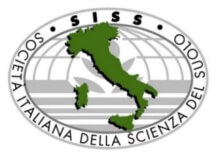Leveraging machine learning to analyze and forecast air quality trends in Kota City, India
DOI:
https://doi.org/10.60923/issn.2281-4485/21975Keywords:
Air quality index, Machine learning models, Exploratory data analysis, NCAPAbstract
Air quality is a critical indicator of environmental health, directly impacting human well-being and ecological stability. Rapid urbanization and industrialization have recently exacerbated air pollution, necessitating robust monitoring and predictive frameworks. This study investigates air quality trends in Kota city of Rajasthan, India and using data from 2017 to 2023. Machine learning models, including linear regression (LR), random forest (RF), decision tree (DT), support vector regressor (SVR), and K-nearest neighbors (KNN), were employed to analyze predict air quality index (AQI) values based on key pollutants such as PM2.5, PM10, NO, NO2, NOx, NH3, SO2, CO, Ozone, Benzene, Ethyl-Benzene, m & p-Xylene considering the effects of meteorological factors like relative humidity (RH), wind speed (WS), wind directions (WD), and barometric pressure (BP). Among these, the decision tree regressor shows almost perfect fit on the training set (R2 score 0.9999) and excellent test performance (R2 score 0.9991), suggesting a very accurate prediction model. However, it exhibits potential overfitting, limiting its generalization capabilities. On the other hand, the random forest regressor provides a balance of accuracy and robustness, achieving an R² score of 0.9831, making it the preferred model for reliable predictions. The study delves into pollutant contributions, evaluates model performances, and explores actionable insights for policymakers. By leveraging machine learning approaches, the study aims to provide a comprehensive framework for analyzing air quality trends and supporting decision-making processes.
References
Abu El-Magd S., Soliman G., Morsy M., Khar-bish S. (2023) Environmental hazard assessment and moni-toring for air pollution using machine learning and remote sensing. International Journal of Environmental Science and Technology, 20(6): 6103–6116.https://doi.org/10.1007/s13762-022-04367-6
Cican G., Buturache A. N., Mirea R. (2023). Ap-plying Machine Learning Techniques in Air Quality Prediction—A Bucharest City Case Study. Sustainability (Switzerland), 15(11). https://doi.org/10.3390/su15118445 Gupta N. S., Mohta Y., Heda K., Armaan R., Valarmathi B., Arulkumaran G. (2023) Pre-diction of air quality index using machine learning techni-ques: A comparative analysis. Journal of Environmental and Public Health, 1–26. https://doi.org/10.1155/2023/4916267
Hsieh H. P., Wu S., Ko C. C., Shei C., Yao Z. T., Chen Y. W. (2022) Forecasting fine-grained air quality for locations without monitoring stations based on a hybrid predictor with spatial-temporal attention based network. Applied Sciences (Switzerland), 12(9). https://doi.org/10.3390/app12094
Liang Y. C., Maimury Y., Chen A. H. L., Juarez J. R. C. (2020) Machine learning-based prediction of air quality. Applied Sciences (Switzerland), 10(24): 1–17. https://doi.org/10.3390/app10249151
NCAP. (2019) National clean air programme. Ministry of Environment, Forest and Climate Change, Govt. of India. https://prana.cpcb.gov.in/ncapDashboard/download_public_portal_file/NCAP_Report.pdf
Neo E. X., Hasikin K., Lai K. W., Mokhtar M. I., Azizan M. M., Hizaddin H. F., Razak S. A., Yanto. (2023) Artificial intelligence-assisted air quality monitoring for smart city management. PeerJ Computer Science, 9. https://doi.org/10.7717/peerj-cs.1306
Ravindiran G., Hayder G., Kanagarathinam K., Alagumalai A., Sonne C. (2023) Air quality prediction by machine learning models: A predictive study on the Indian coastal city of Visakhapatnam. Chemosphere, 338. https://doi.org/10.1016/j.chemosphere.2023.139518
Rowley A., Karakuş O. (2023) Predicting air quality via multimodal AI and satellite imagery. Remote Sensing of Environment, 293. https://doi.org/10.1016/j.rse.2023.113609
Ruhela M., Maheshwari V., Ahamad F., Kam-boj V. (2022) Air quality assessment of Jaipur city Rajasthan after the COVID-19 lockdown. Spatial Information Research, 30(5):597–605. https://doi.org/10.1007/s41324-022-00456-3
Sharma M., Choudhary M. P., Mathur ANIL K. (2024) Mitigating air pollution and protecting public health: analyzing the impact of national clean air programme in Kota, Rajasthan. Current World Environment. 19(3). http://dx.doi.org/10.12944/CWE.19.3.12
WHO. (2018) Burden of disease from ambient air pollution for 2016. Version 2 May 2018. Summary of results. Geneva: World Health Organization; 2018. https://cdn.who.int/media/docs/default-source/air-pollu tion-documents/air-quality-and-health/aap_bod_results_ may2018_final.pdf
Zaheer K., Saeed S., Tariq S.(2023) Prediction of aerosol optical depth over Pakistan using novel hybrid machine learning model. Acta Geophys. 71:2009–2029. https://doi.org/10.1007/s11600-023-01072-x
Zimmerman N., Presto A.A., Kumar S.P.N., Gu J., Hauryliuk A., Robinson E.S., Robinson A.L., Subramanian R. (2018) A machine learning calibration model using random forests to improve sensor performance for lower-cost air quality monitoring. Atmospheric Measurement Techniques, 11(1):291–313. https://doi.org/10.5194/amt-11-291-2018
Downloads
Published
How to Cite
Issue
Section
License
Copyright (c) 2026 Monika Sharma, Mahendra Pratap Choudhary, Anil K. Mathur

This work is licensed under a Creative Commons Attribution 4.0 International License.









